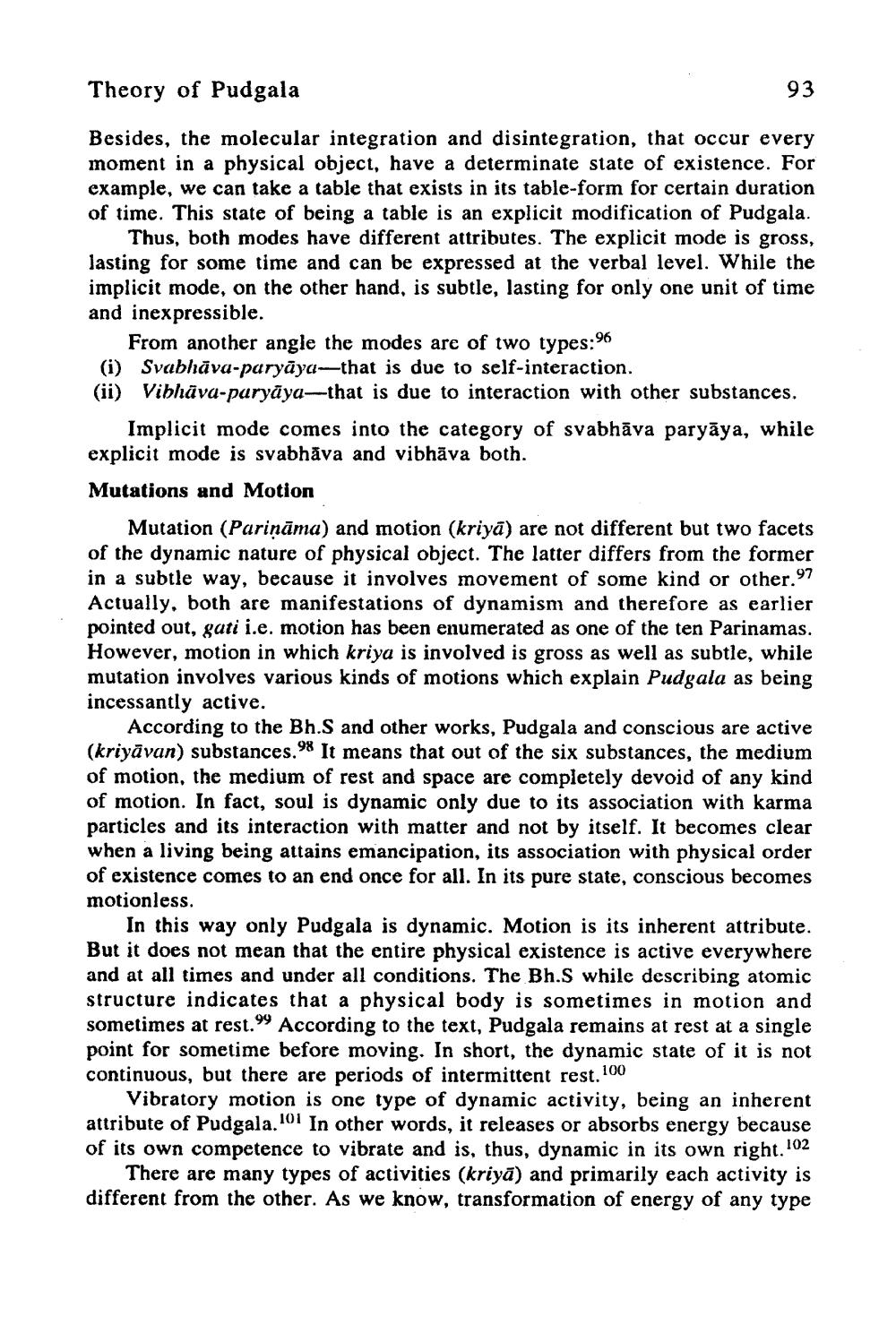________________
Theory of Pudgala
93
Besides, the molecular integration and disintegration, that occur every moment in a physical object, have a determinate state of existence. For example, we can take a table that exists in its table-form for certain duration of time. This state of being a table is an explicit modification of Pudgala.
Thus, both modes have different attributes. The explicit mode is gross, lasting for some time and can be expressed at the verbal level. While the implicit mode, on the other hand, is subtle, lasting for only one unit of time and inexpressible.
From another angle the modes are of two types:96 (i) Svabhāva-paryāya-that is due to self-interaction. (ii) Vibhāva-paryāya---that is due to interaction with other substances.
Implicit mode comes into the category of svabhāva paryāya, while explicit mode is svabhāva and vibhāva both. Mutations and Motion
Mutation (Pariņāma) and motion (kriyā) are not different but two facets of the dynamic nature of physical object. The latter differs from the former in a subtle way, because it involves movement of some kind or other.97 Actually, both are manifestations of dynamism and therefore as earlier pointed out, gati i.e. motion has been enumerated as one of the ten Parinamas. However, motion in which kriya is involved is gross as well as subtle, while mutation involves various kinds of motions which explain Pudgala as being incessantly active.
According to the Bh.S and other works, Pudgala and conscious are active (kriyāvan) substances. It means that out of the six substances, the medium of motion, the medium of rest and space are completely devoid of any kind of motion. In fact, soul is dynamic only due to its association with karma particles and its interaction with matter and not by itself. It becomes clear when a living being attains emancipation, its association with physical order of existence comes to an end once for all. In its pure state, conscious becomes motionless.
In this way only Pudgala is dynamic. Motion is its inherent attribute. But it does not mean that the entire physical existence is active everywhere and at all times and under all conditions. The Bh.S while describing atomic structure indicates that a physical body is sometimes in motion and sometimes at rest.99 According to the text, Pudgala remains at rest at a single point for sometime before moving. In short, the dynamic state of it is not continuous, but there are periods of intermittent rest.100
Vibratory motion is one type of dynamic activity, being an inherent attribute of Pudgala.101 In other words, it releases or absorbs energy because of its own competence to vibrate and is, thus, dynamic in its own right.102
There are many types of activities (kriyā) and primarily each activity is different from the other. As we know, transformation of energy of any type




